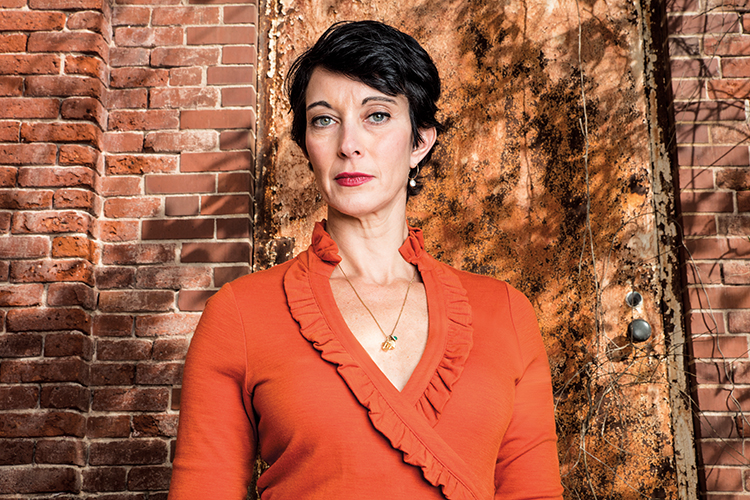Finding hopefulness through writing
Eight years ago, I sat across from my outpatient psychiatrist, an impassive diagnostic bureaucrat who sat behind my 5-inch medical file — a monolithic, supposedly definitive summary of my case history. My shorthand summary? Rapid-cycling bipolar disorder, anorexia, alcoholism, self-injury, and hospitalization more than 20 times, with long stints in inpatient programs meant to save me from myself.
His finger tapped the file and he said, “There’s nothing more I can do for you. You’re a hopeless case.”
This was not the first time I’d heard this. My frustrated therapist of 10 years had frequently said with kindness and concern, “You’re the most hopeless patient I have ever worked with.” He didn’t believe that I was hopeless, but I did and believed my end was predetermined — suicide. After all, over the years, I’d attempted suicide half-heartedly, once with full intent, and I always returned to the world with regret, not gratitude.
Hopelessness, counter to common understanding, is not passive inertia, but agitated despair. I was consumed by the persistent agony of wanting to hope for my return from bleak, blank despair to a joyful, purposeful life. The novelist George Eliot writes, “What we call our despair is often only the eagerness of unfed hope.” This can feel like an untenable balancing act: how to live between expectation and decimation, over and over? Easier, really, to cut ties with the world.
But that afternoon? Listening to that psychiatrist who was so sure that I was a hopeless case, so sure that I was no longer worth treating, so sure I no longer had a possible future? I suddenly understood that the yielding to despair — the starving, the drinking, the cutting, the suicide attempting — was my failure to keep tenuous hold on hope’s speculative, provisional promise: maybe, but only maybe. Could I live with that uncertainty?
With my own definitive expletive as farewell, I walked out of that psychiatrist’s office and back into life.
Yes, despair is the eagerness of unfed hope. Hopelessness severs connection, forces us into retreat. I have no hope for the world, no hope for us, no hope for myself, and therefore can take my leave. But the heart, though a bruised and battered muscle, is made of regenerative fibers and beats this rhythm — maybe more, maybe more. Risk offers its own unpredictable, though often wondrous, repairs. Emily Dickinson instructs, “Hope is a thing with feathers.” We are fragile beings, yoked to this earth by gravity and our eventual grave, but, capable, too, of aeronautical miracles. Resurrection by flight on wings and a prayer, on currents and updrafts.
In the past eight years, I’ve worked diligently and passionately toward my balanced recovery: necessary medication, meals, and sleep to sustain my brain and body, as well as a 12-step program and writing to sustain my soul. I was 7 years old when I started three-fingered typing on my mother’s Smith Corona — dreaming through language. A sentence is an act of hope. Subject + verb + object = meaning. Movement through time with purpose. Writing requires rewriting, correcting redundancies, plot holes, inaccuracies, and hasty conclusions, but also requires revision, seeing with new eyes the expansive possibilities in a story.
When I began rewriting and revising my story, I could see pain and suffering, but also hope and joy in the meaning-making and understood this: We have an obligation to reach for each other in truth and integrity. Gravity is a force that draws two objects together. My body and the earth. Me to you. Some birds — chimney swifts and peregrine falcons — fall into flight, leaping from branches and cliffs and careening to what seems sure death. And yet: wings and feathers. Edmund Burke writes that the imagination, necessary for enduring the chaos of despair, is “what the heart owns and understanding ratifies.” We cannot be parsimonious or miserly in our hope, but must risk lavish flight and understanding together.
Years later, I managed to get a copy of that medical file. As I paged through it, my heart skipped a beat at a mundane medical management progress note — specifically, at one small almost inscrutable handwritten note jotted under the lab results and clinical markers (Appearance: Meticulous; Behavior: Cooperative; Mood/Affect: Less Depressed): “She has completed a story, feeling + and proud of this.” Maybe more, maybe more was transformed suddenly into only yes, only yes.
— Kerry Neville ’94 is writing a memoir titled Fierce on the Inside. She is the coordinator of the graduate MFA and undergraduate creative writing program at Georgia College and State University, where she is also an assistant professor of English. Recently, she was a Fulbright Scholar in Ireland, and was visiting faculty in the master of arts in creative writing program at the University of Limerick. She is the author of two collections of short stories, Remember to Forget Me and Necessary Lies, as well as numerous essays.

